#el prado museum
Text
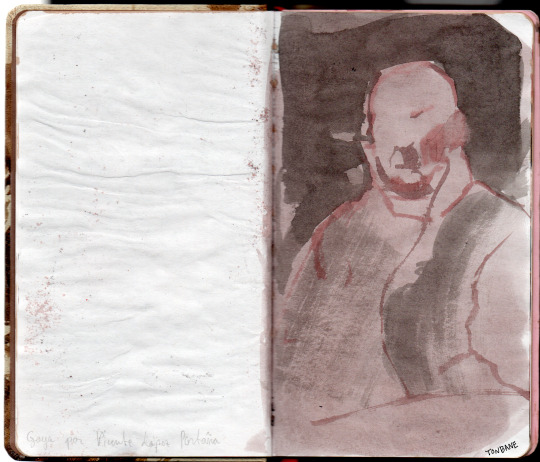
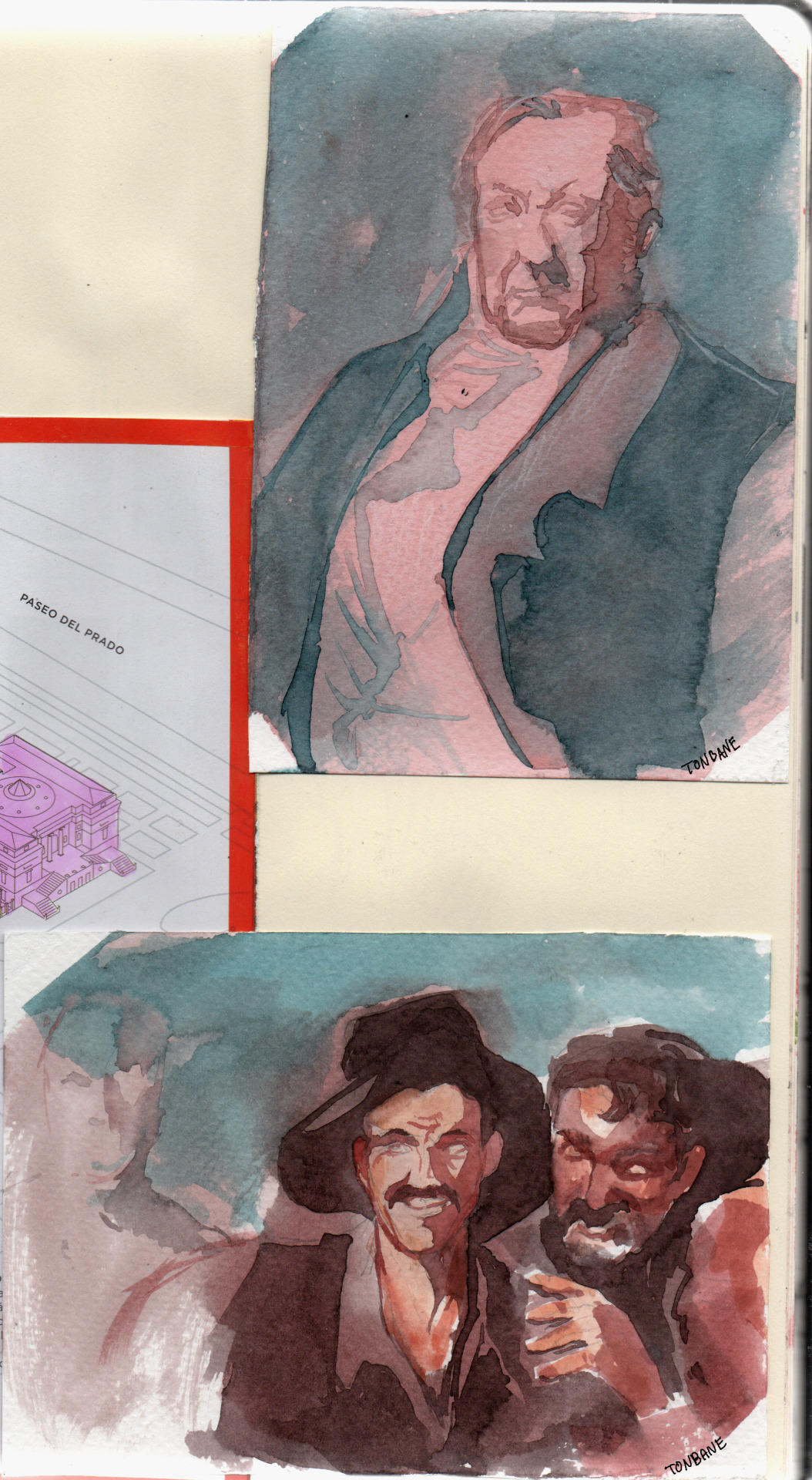
I finally got my scanner back! You know what that means... Some sketches from the last time I visited El Prado ✨
1, 2: Goya portrayed by Vicente López Portaña
3. detail of: The drunkards (or Bacchus victory) by Velázquez. Because the man in the middle looks like my grandfather :)
Reblog to drink wine with Bacchus 🍷🔄
#goya#vicente lópez portaña#velazquez#velázquez#francisco de goya#diego velazquez#el prado#el prado museum#art study#sketch#museum visit#museum#art history#tonbane#i love velázquez
13 notes
·
View notes
Note
What’s your favorite museum you’ve visited? You always seem to go to such lovely ones! 💛
The Louvre is by far my favourite as predictable as that may be 😄 then The British museum and Musée d'Orsay I think! honorable mentions to the Vatican museum and Uffizi gallery in big part due to the beauty of their locations. Some of my favourites are house-museums with private collections! like the Cerralbo and Sir John Soane's 🥰
#does the Versailles palace count as a museum 🤔#if I start including palaces cathedrals and public buildings I will never stop writing tho so I won't include 😆#oh also extra honorable mention to El Prado for room 75 specifically and also all the Rubens
51 notes
·
View notes
Text

The Ultimate Painter
2 notes
·
View notes
Text
Francisco José de Goya, Spanish romantic painter and printmaker (1746-1828)
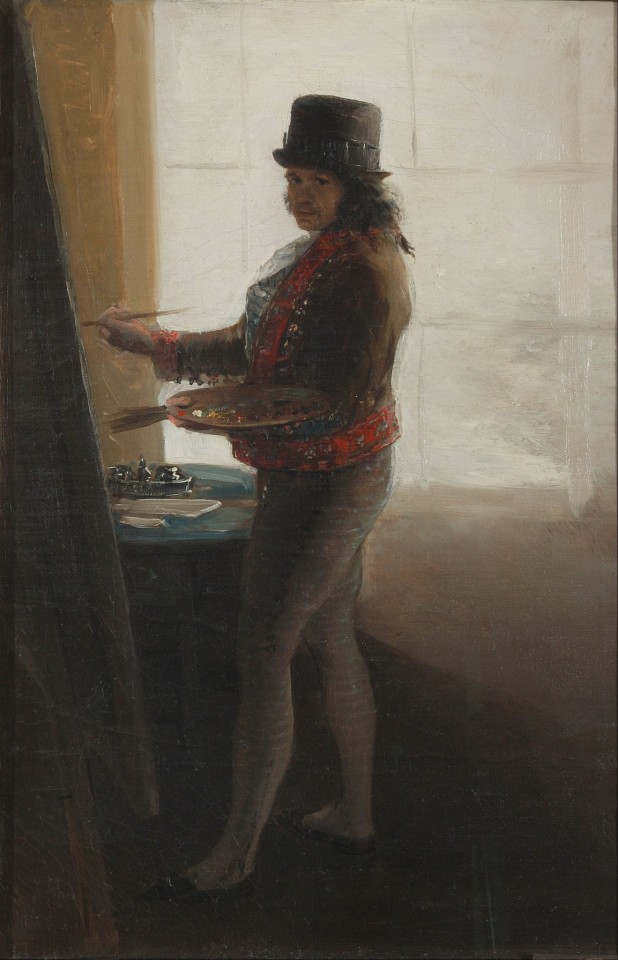
Self-Portrait at an easel • 1790-1795 • Real Academia de Bellas Artes de San Fernando, Madrid
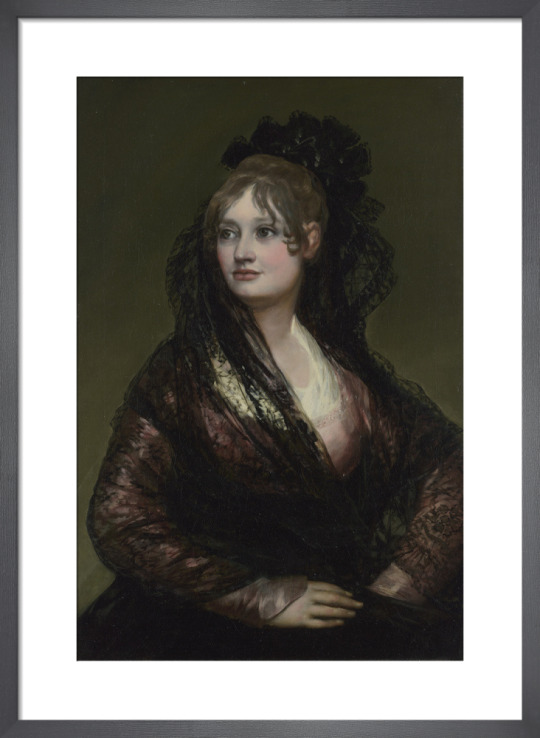
Doña Isabel de Porcel • c. 1805 • The National Gallery, London

Portrait of Manuel Osorio Manrique de Zuñiga • 1788 • Metropolitan Museum of Art, New York

Portrait of the Duchess of Alba • 1797 • The Hispanic Society of America, New York, N.Y. The subject of the painting is María Cayetana de Silva, 13th Duchess of Alba, then 35 years old. [Wikipedia]
Goya created a pendant* of the same woman identically posed, but clothed, known today as La maja vestida (The Clothed Maja) also in the Prado, and usually hung next to La maja desnuda.
* In art, a pendant is one of two paintings, statues, reliefs or other type of works of art intended as a pair. [Wikipedia]
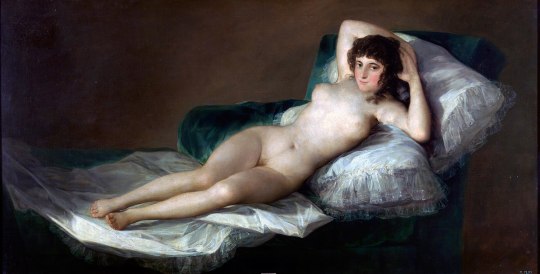
La maja desnuda (The Nude Maja) • 1797–1800 • Museo Nacional del Prado

La Maja Vestida (The Clothed Maja) • 1797-1800 •
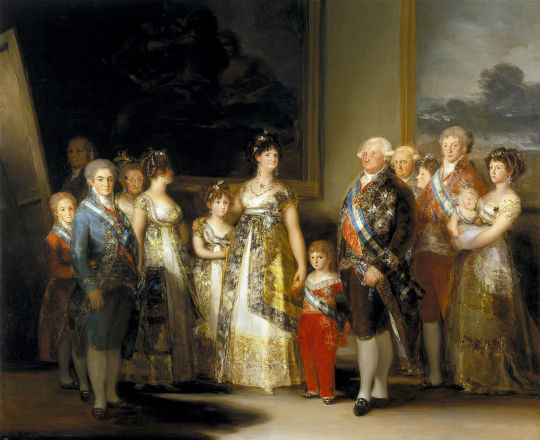
La familia de Carlos IV (The Family of Charles the IV) • 1800-1801 • Museo del Prado, Madrid

La gallina ciega (Blind Man's Bluff) • 1789 • Museo del Prado, Madrid
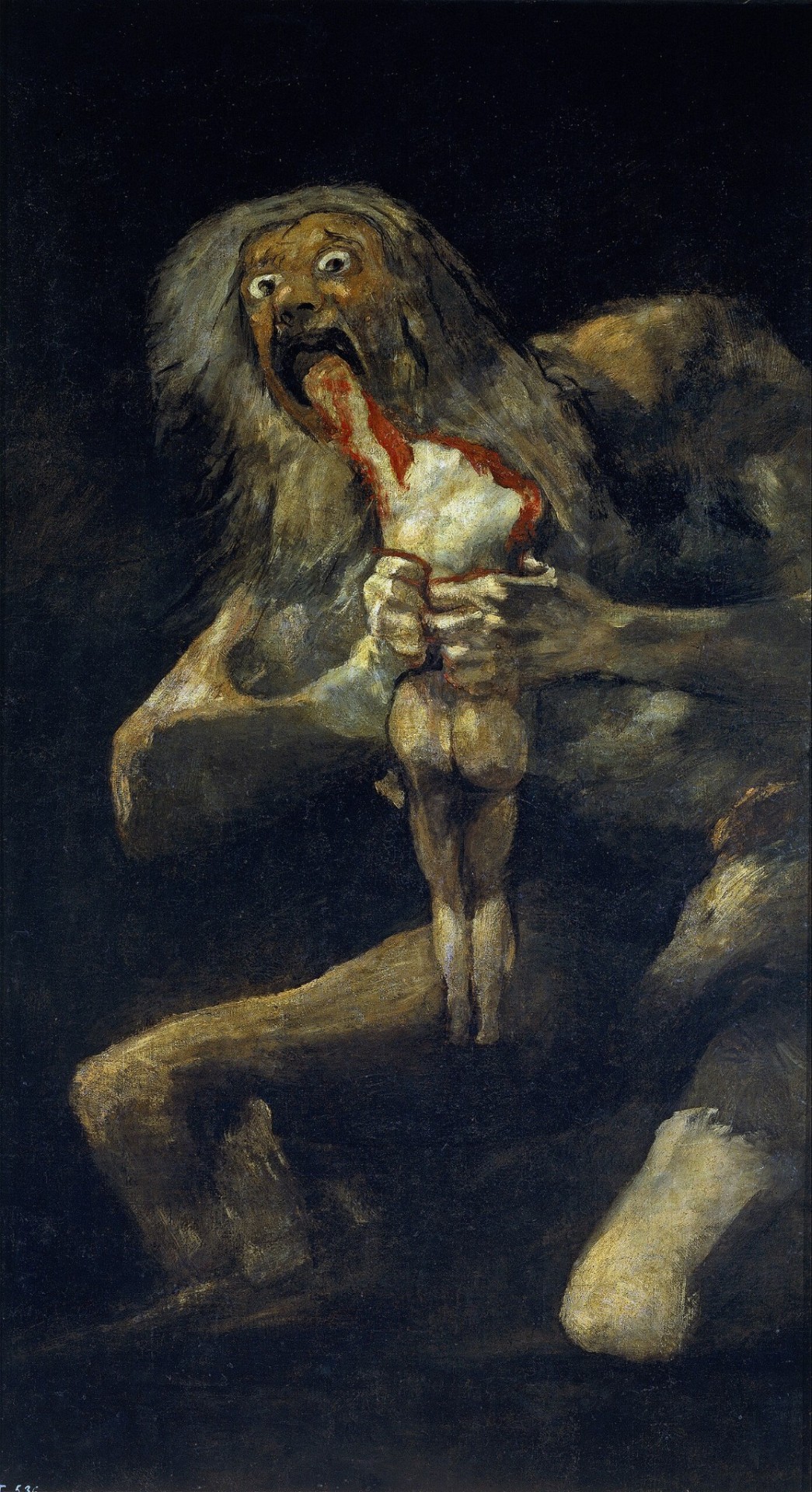
Saturno devorando a su hijo (Satan Devouring his Son) • 1819–1823 • Museo del Prado, Madrid
Satan Devouring his Son is traditionally interpreted as a depiction of the Greek myth of the Titan Cronus (known as Saturn in Roman mythology) eating one of his offspring. Fearing a prophecy foretold by Gaea that predicted he would be overthrown by one of his children, Saturn ate each one upon their birth.[a] The work is one of the 14 so-called Black Paintings that Goya painted directly on the walls of his house sometime between 1820 and 1823.[2] It was transferred to canvas after Goya's death and is now in the Museo del Prado in Madrid.
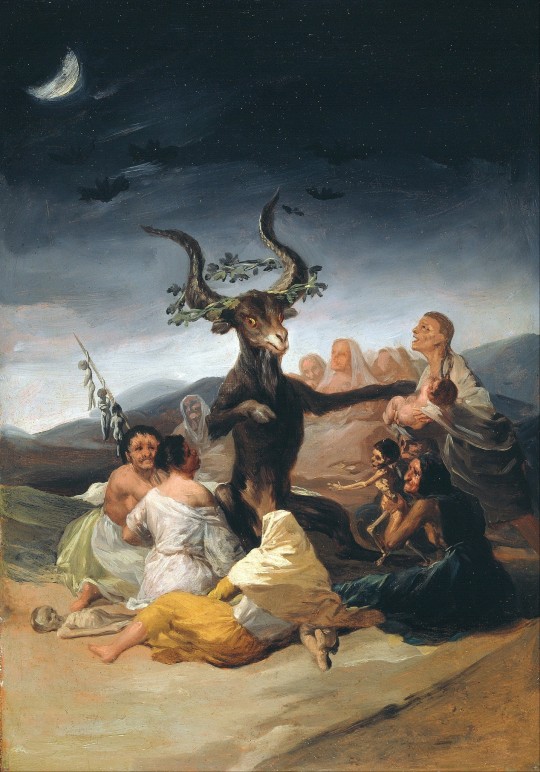
El aquelarre (The Witches' Sabath) • 1798 • Museo Lázaro Galdiano, Madrid
#goya#francisco de goya#spanish painter#romanticism#art#painting#fine art#bannedonpinterest#art nude#18th century art#mythological painting#portraiture#art history#self portrait#oil on canvas
56 notes
·
View notes
Text

"Narcissus and Echo Crystal Jar" school of Fontainebleau, 1555. From Dauphin's Treasure, El Prado Museum.
23 notes
·
View notes
Text
The thing I like about this outfit in the Human Realm is how classic it is.

Four visual elements: a white underlayer, a black satin robe, a belt, and a long, trailing gown, also black.

This look would be very close to wearable anywhere from Shanghai to Aberdeen pretty much anywhen in the two thousand years up to 1790, probably before, and to some extent beyond. The priesthoods of the Catholic and Orthodox churches still wear something not very dissimilar every day.
The point of luxurious cloth, heavily dyed deep black, worn with just a bit of visible white at the neck, and otherwise simple adornments, is to convey a balance of two contradictory things: (1) power/prestige/wealth/authority and (2) a factitious, formal modesty that says "too classy, cool or serious for colour". Either way, it's "don't mess with me", which is exactly what our character is saying here, totally out of his depth and being severely messed with.
All I really want to do here is have a little wander with you through the collections of the National Gallery and point to some examples from the history of Western painting. If you have the Chinese references, I would LOVE to see them! This will all be 16th and 17th century oil paintings, because that's where the good surviving stuff is for this particular visual trope.
The English art dealer George Gage and two attendants, painted by Anthony van Dyck in 1622-3:
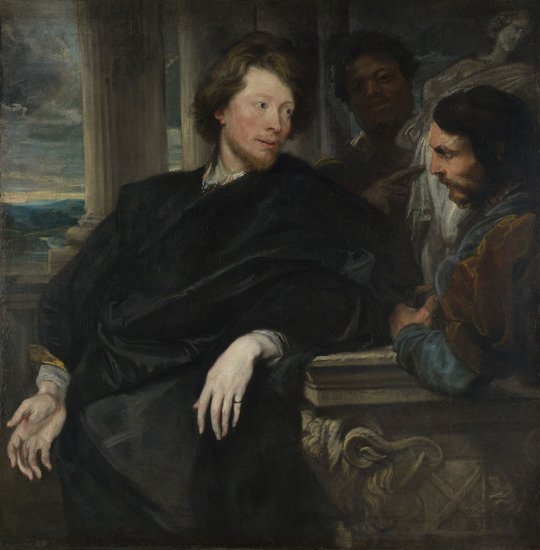
The Spanish cleric, Don Justino de Neve, by Bartolomé Esteban Murillo, 1665:

Actually, we could pop across the Channel to the Rijksmuseum in Amsterdam and look at these two extremely solid Dutch citizens, painted by by Joos van Celve in 1518 and Maarten van Heemskerck in 1529 respectively:
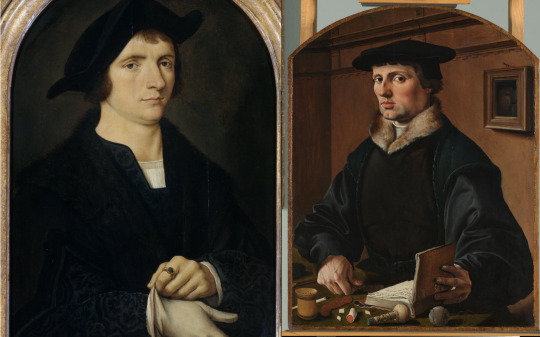
And how could I ever forget the Nobleman with Hand on Heart, by El Greco, in the Prado of Madrid, about 1575-1580:

Actually, let's skip back for a moment to this rather lovely geometric and floral moonscape of a patterned robe and gown ensemble, which I don't have a lot to say about:

And then admire the splendid sleeve of Gerolamo Barbarigo, by Titian, 1510:

Finally, the classic luxury black with white linen glimpsed at the throat has always been at least potentially a unisex style, and so I cannot resist showing you Hans Holbein the Younger's absolute bombshell of a masterwork: Christina of Denmark, Duchess of Milan, 1538. A widow, fifteen years old.

Holbein was a truly wonderful painter and I especially admire his portraits of women (look at this one!) for the way he makes us look completely real, normal, subjective and autonomous and also incredibly sexy, although his portraits of men are occasionally just as stunning (Kunsthistoriches Museum, Vienna). Here, he has painted a dimple in the act of appearing, because he was just that good. This portrait is close to life-size, it's in the National Gallery in London and if you ever get the chance to stand in front of it, do.
The DFQC costumes master post is here.
#love between fairy and devil#cang lan jue#costumes#lbfad#cdrama#cdrama visual world#western art history
49 notes
·
View notes
Text
My sister coming back from Madrid and showing me the pictures have made me realize that some Madrilians are dumb. Like, every time they wanna brag about Madrid they show the same picture of the same goddamn building (if y'all Spanish y'all probably know which one) which looks cool, but like. You guys have El Retiro Park. You guys have the Debod Temple. The Prado Museum, the Thyssen Museum, the Royal Palace, el Palacio de Cristal, El Capricho, la Puerta de Alcalá... And y'all always choose the goddamn Carrión building to brag about your city?? C'mon guys
48 notes
·
View notes
Text
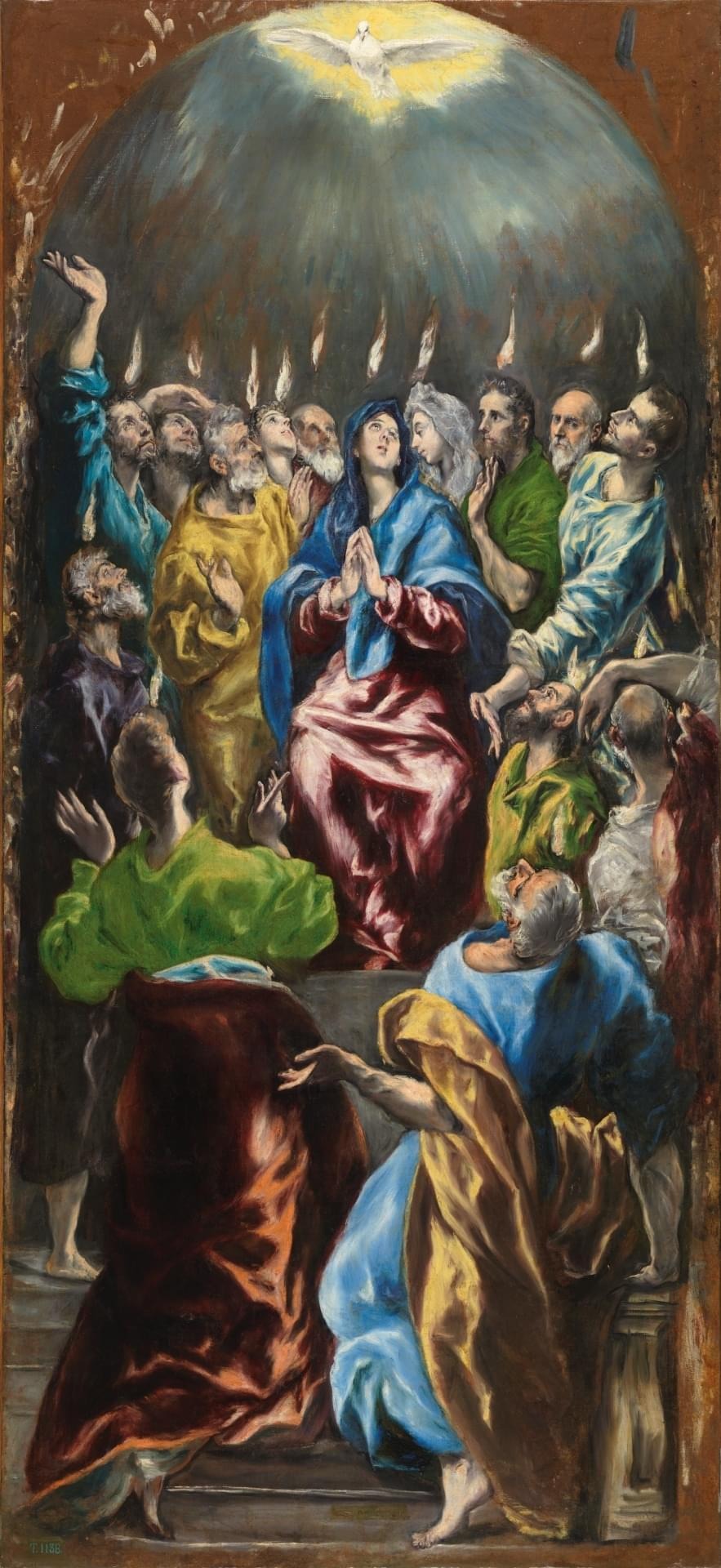
El Greco (Domenikos Theotokopoulos), Pentecost (Toledo 1600). This work depicts the moment when the Holy Ghost, in the form of flames, rests on the Virgin and the Apostles on Pentecost day in Jerusalem, as is told in the book of Acts (2: 1-5). The bald, bearded Apostle who looks out at the viewer from the right of the canvas has been identified as a self-portrait, or as a portrait of the artist´s friend, Antonio de Covarrubias. Along with other paintings in the Prado Museum (P00821, P00823, P00825, P03888), this work was painted as part of the main altarpiece for the church of the Augustine College of María de Aragón in Madrid. A sketch or autograph reduction can be found in the Zogheb collection in Paris. The signature is on the second step, in Greek letters. It was redone during an old restoration.
In 1596 El Greco was commissioned to paint the high altar of the Colegio de la Encarnación (Madrid), an Augustinian seminary better known by the name of its founder, Doña María de Córdoba y Aragón (1539-1593).
* * * *
Pentecost is an invitation to dream. For when a community of faith quits dreaming dreams, it has little to offer either its members or the wider world.
Like any good dream, these dreams involve adopting a new perspective on what's possible, rousing our creativity to free us from conventional expectations. They help us see that maybe what we thought was outlandish actually lies within reach. Maybe I can find freedom from what binds me. Maybe there can be justice. Maybe I can make a difference. Maybe a person's value isn't determined by her income. Maybe the future of our economy or our society or our planet is not yet determined. Maybe God is here with me, even if my current struggles never go away.
~ Matthew L. Skinner, a professor of New Testament at Luther Seminary Illustration : What We Do For Love ~ Catherine G Mcelroy
[h/t Paul Corby]
26 notes
·
View notes
Text
Next on the Bucket List: Spain

Spain is a stunningly vibrant nation that has plenty to offer all who visit, including breath-taking architecture, scenic spots, delectable cuisine, and a rich cultural heritage. I'll be breaking down some possible activities to include in your itinerary, there being endless things to do when traveling to this new and exciting area!
Activities and Attractions
Each Spanish city has a distinctive charm and offers something different for everyone who visits. The most widely visited locations are undoubtedly Madrid, Barcelona, Malaga, and the island of Ibiza, all of which have a ton to offer for tourists and locals. Spain has a rich and intriguing history, and visiting museums and art galleries is a wonderful opportunity to immerse yourself in the country's culture. Some of the most renowned museums are The Prado Museum and El Prado in Madrid and the Picasso Museum in Barcelona, all of which are tourist-favorites. If you want a different setting, there are many ancient castles and gothic cathedrals to visit in Spain, Lorca Castle and Burgos Cathedral being some of the most prominent to visit and admire. There is no doubt that Spain has some of the most stunning beaches in Europe, including Costa Brava, Costa del Sol, and Costa Blanca.
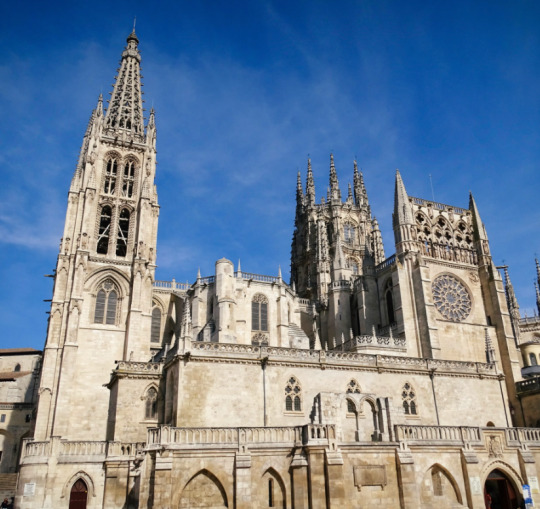
Festivals are popular in Spanish culture, where traditional eccentric dress is worn. At these festivals, there is flamenco dancing, tomato fights, bull races, contests, parades, and tons of Spanish cuisine. This is a great way to be immersed into Spanish culture whether you're alone or with a group! As we all know, Fútbol is a very popular and celebrated sport in Spain, and attending a match is another unforgettable experience for spirited fans of Real Madrid and FC Barcelona.
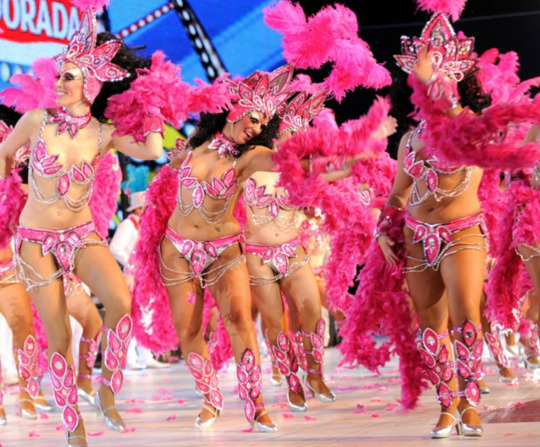
Food
Moving forward, Spain is known for its unique and tasty cuisine and each region typically has specialty foods. A very popular dish is Paella, which includes rice stuffed with saffron, vegetables and meat. Gazpacho, Tortilla Espanola, Patatas Bravas, and Pulpo a la Gallega are just a few of the most versatile options offered throughout the country. It is a known custom that Spanish residents eat dinner between the hours of 9 and 11 pm, so plan to have lunch between 2 and 4 pm so you're not famished waiting til dinner. Venturing out of your comfort zone and trying something you wouldn't normally eat is encouraged, and you should be openminded about everything because it might become your new favorite!
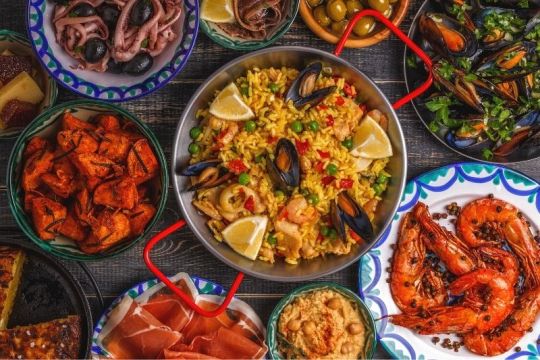
Transportation
Public transportation makes travel efficient and easy, and Spain has a great system that ranges from trains, buses, to metros, etc. These options are typically very cheap and will allow you to venture from city to city in the timely manner and help you navigate the country with ease and minimal stress! If you aren't fluent in Spanish, having a translator app is very useful for when you're on the road, though the majority of residents typically speak some degree of English.

When planning your trip to Spain, I highly recommend that you see all the things that this amazing country has to offer so you can appreciate and experience the beautiful Spanish culture and scenery. Everyone should have Spain on their bucket list, as there are endless things to do and an incredible culture that you just have to see for yourself!
#spain#europe#travel blog writer#wanderlust#places to explore#explore#seetheworld#adventure#vacation#goexplore#travel photography#trip#landscape#architecture#spanish cuisine#spanish culture#festivals#football#madrid#portugal#barcelona#languages#el prado#ancient history#spainiswonderful
25 notes
·
View notes
Text

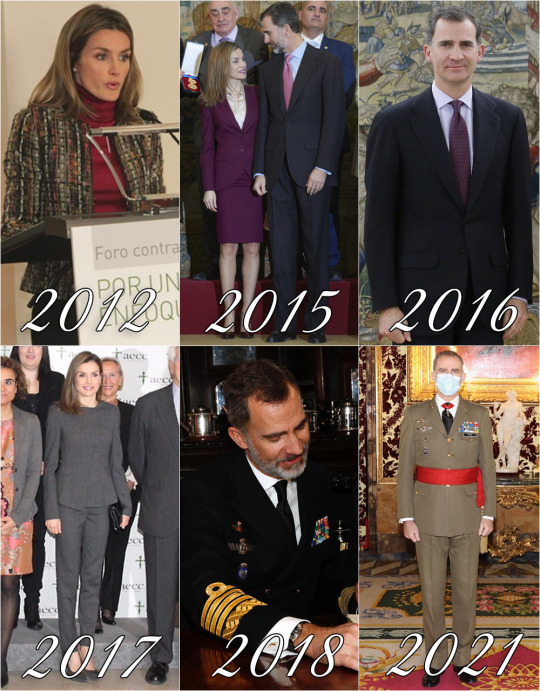
Felipe and Letizia retrospective: February 2nd
2004: Dinner offered to the President of Uruguay Jorge Battle and first lady Mercedes Menafra the Royal Palace.
2005: Visit to the works to expand the Madrid subway.
2006: Audiences at la Zarzuela
2009: Attended the inauguration of the Francis Bacon exhibition at El Prado Museum
2010: Exercise MAR-01 in Cadiz
2011: Visited “Profesor Raul Vazquez” educational center
2012: Forum against Cancer in Madrid.
2015: Ceremony of Fine Arts Golden Medals.
2016: Audiences at la Zarzuela
2017: 6th Forum Against Cancer “For an integral approach” in Madrid
2018: Visited the School Ship “Juan Sebastián de Elcano” in San Fernando, Cádiz (1, 2)
2021: Meeting of the Board of Trustees of the Foundation for Help Against Drug Addiction & Military Audiences
2022: Received credentials of new ambassadors & Work meeting with UNICEF Spain
2023: Event presenting the “All against Cancer” project, on the occasion of the celebration of “World Cancer Day”; Military audiences & Event “Monarchy in Democracy. The United Kingdom during the Reign of Elizabeth II (1952-2022)”
F&L Through the Years: 1126/??
#King Felipe#Queen Letizia#King Felipe of Spain#Queen Letizia of Spain#King Felipe VI#King Felipe VI of Spain#F&L Through the Years#February2
3 notes
·
View notes
Note
I remember you saying your from spain. Im going to be in spain (mostly in madrid) for the next two weeks or so, is there any places that you recommend to visit or check out?
Ohh you going to Madrid with this heat, brave. I’m not from Madrid but any museum like El Prado, Thyssen, Reina Sofia etc. and then outside you gotta go to El Retiro Park, Plaza Mayor and Palacio Real. If you wanna shop Gran Via is your place.
8 notes
·
View notes
Text
Something I never thought about in terms of inaccessibility of museums until I faced it myself was a lack of place to sit and look at the exhibits
The other day we visited El Prado in Madrid and it was amazing and gorgeous but we were all jetlagged as hell and just needed to sit in order to regain processing ability and while there were not seats everywhere, the big rooms tended to have at least one large bench to sit at and just look and rest your legs for a bit. I wish they were maybe a little closer or had little books so you could read the description of the art while sitting and honestly more of the rooms could have used something, but I was still able to enjoy the art for the most part
This was the start of me realizing that some of these museums are really inaccessible to some disabled people due to their lack of seating
And then I went to La Reina Sofia
Do you want to sit and look at the art? Well fuck you actually. The only exhibits with seating were *some* of the films and not all of them and the only other places to sit were the restaurant and some of the hallways specially on the second floor, both of which were no where near any of the actual art. If you want to sit and look at the art, your only option is literally just to fucking sit on the floor which feels uncomfortable in a nice public setting where there are security guards literally everywhere
A lot of the exhibits were honestly pretty overwhelming either due to the content (lots of the art was in relation to fascism) or the audio of old film which was really loud and being able to sit in peace to absorb it in a more comfortable space would have been super nice. And it was absolute torture once I started having seizure like symptoms and could feel a migraine coming on and I just needed to sit because I was worried I was going to fall onto one of the many statues that were just out without any roping off. I just wanted to sit in a comfortable and socially acceptable place and there was literally no where to do so on the 4th floor
So just a tip, if you want to go to an art museum in Madrid and you have any reason that might mean you would want to sit down in the middle of an exhibit, I would not recommend La Reina Sofia
(Also, there is only a 3 euro difference between the two museums and El Prado has so much more art and seating)
7 notes
·
View notes
Text


Queen Letizia of Spain at the opening of the exhibition "Picasso 1906. The Turning Point" at The Reina Sofia Museum and later at the "El Mundo International Journalism Award" ceremony at the Prado Museum - 14.11.23
3 notes
·
View notes
Text




Through the Years → Felipe VI of Spain (2,065/∞)
19 June 2017 | King Felipe of Spain and Queen Letizia of Spain attend 'El Arte de Educar' at El Prado Museum in Madrid, Spain. (Photo by Europa Press/Europa Press via Getty Images)
4 notes
·
View notes
Text
El Museo del Prado: A Legacy of 200 Years
El Museo del Prado, established in 1819 and posits itself as the main cultural center of Spain, serves as one of Europe’s premier art institutions. The beginnings of the formal museum were not found in the halls of the monarchy, but rather in the palaces of the nobility; instead of just a show of artworks, nobles took more of an art historical approach to their collections. However, it wasn’t until the reign of Joseph Bonaparte that plans for a national museum were fostered. Nonetheless, Ferdinand VII was the individual that allowed those plans to come to fruition, not necessarily as a way to promote civil rights, a legacy of the French Revolution, but instead as a way to cement a national heritage for his country, and also as a reminder of the extent of his power. The building that serves as the museum was designed by Juan de Villanueva in 1785, and was initially meant for an academy of natural history. Thus, despite the change in purpose, the building, and later, the Museum itself was meant as a place of learning and a nexus of Spanish scholasticism. Because of this, the Prado acts as a landmark of sorts, highlighting Spain’s desire to investigate deeper into the Spanish school, an example of Spanish national identity, a far cry from the outward approach to art two centuries earlier.
Since its inception, the Museo del Prado has existed as a synonym of Spanish art, due to its collection of the most Spanish artworks in Europe. However, most of its collection comes from the Habsburg and Bourbon houses, which not only consisted of Spanish art, but also those of Flemish, Italian, and French masters. Thus, the Prado’s collection is able to facilitate a conversation across temporalities, and quite possibly serves as one of the driving vehicles towards modernity. The Prado was created as one way to establish a national heritage of Spain, one that would feature its absolute monarch, Ferdinand VII. Additionally, art held a greater purpose than instruments of ornamentation, rather as a display of wealth and power for the royal family and their guests. The implementation of these great works into a public collection just serves as a reminder of the reach of Ferdinand’s absolute rule, while also fostering a more modern approach to public spaces, which gave more people access and knowledge about Spain’s role in the art realm. Even the building’s neoclassical style serves as a reference to the country's consumption of outside influences, but still suggests a identity that is all its own. Thus, by the time it adopted its current name, the Museo Nacional del Prado, Spain had just exiled its queen, Isabella II, serving as a reflection of Spanish sentiments, then and now. Fascinatingly, the museum was established in 1819, which was almost thirty years since the start of the French Revolution. The idea of a museum is a product of the Enlightenment, an antithesis to Ferdinand's total control over the state. However, through this museum Ferdinand’s power was placed on full display: the pride for his country, the artistry that it produced, and the community that it fostered grew in influence. By the start of the museum’s history, it contained 311 paintings and its catalogue was only published in Spanish; as time passed however, the collection grew, and the museum catalogue was no longer printed in Spanish, but also in French and Italian. The Prado’s influence is no longer restricted to just those of Spanish society, but spreads to a greater audience outside of the country who are then able to witness its influence.
The museum’s impact remained a constant throughout the nineteenth and beginnings of the twentieth century. However, that influence was tested with the start of the Spanish Civil War. The Civil War of Spain, which took place between 1936 to 1939, was a war of differing ideologies that were spreading through Europe, and could be considered a smaller scale of World War II, set to occur months after General Francisco Franco’s victory in Spain. The war was fought between the Soviet supported Republicans, who wanted a democratic republic, titled the Second Republic of Spain. Fighting against the Republicans were the Nationalists, comprised of mainly monarchists, who were supported by fascist Italy and Nazi Germany. By the end of the Spanish Civil War, however, the Republicans had lost control of the country, and Franco, the leader of the Nationalist faction, rose to power, establishing a military dictatorship until his death in 1975. During the fighting that broke out in all corners of the country, one of the main vulnerabilities of the Spanish was the art that they held, most of it centered in the Museo del Prado. This need to protect the cultural legacy of Spanish artists illustrates the cemented national heritage that Spain had formed over the past century through the Prado’s existence. Two of Spain’s great masterpieces, The 2nd and 3rd of May, 1808 by Francisco Goya, were transported on lorries to Valencia, then to Girona, even though they ultimately suffered damage from a train crash in the village of Biencarló. Damage aside, much of the Prado’s collection was protected by transporting these works to different parts of the country, especially to guard against the aerial bombings by Franco’s allies. Interestingly enough, both factions desired to protect the art of Spain, and months after fighting ceased, the artworks made their way back into the halls of the Prado in September 1939. Thus, for three years, the doors of the Prado were sealed, a fitting image for a country whose identity and fate was, at the time, uncertain.
The story of the Prado is a fascinating one, due to its distinct history as one of the only collections of Spanish art. Because of this, the Prado and the institution of the museum lends itself to be a protector of sorts. As seen with the Prado’s response to the Spanish Civil War, the main function of a museum is not to only showcase works, but to preserve them for generations to come. Masterpieces such as Las Meninas are more than just objects of ornamentation, and contain great deals of aesthetic and historical value. Additionally, these bodies of works that museums hold are a way to view past societies, as they change fluidly through time. The walls of a museum never stay stagnant, and very few pieces are constantly on display; hence, the public that it represents changes as well, with a few important exceptions. A museum reminds us of those exceptions, or the landmarks which can detail where we have been, and ultimately shape where we need to go. One important question to consider now is how the museum in general can be relevant to those marginalized in the field of art history? Is it necessary to justify its existence, and how can those excluded be involved now in this cultural discourse, despite their positionality in previous centuries? It is an ongoing process, one that will not be solved anytime soon, but with time, an answer may be revealed.
The Prado represents many things: a physical embodiment of the country’s cultural heritage, a space for artistic scholasticism, or even simply a must-see during one’s trip to Madrid. According to Michael Novacek, museums serve as a “tangible record of life on Earth.” Thus, the record that the Prado maintains is an invaluable source of information to Spain and a greater audience abroad. Not only is the museum a center for creative expression and intellectualism, but serves a deeper purpose: allowing its visitors to regain a familiarity of the human experience. By viewing the world through these masterpieces, it can allow some to challenge the notions of our own society, even with voices from the past. The Prado is only one example of a museum, but is part of a tradition that has been integral to Spain for the past 200 years. For future generations, let us hope for 200 more.
5 notes
·
View notes
Text




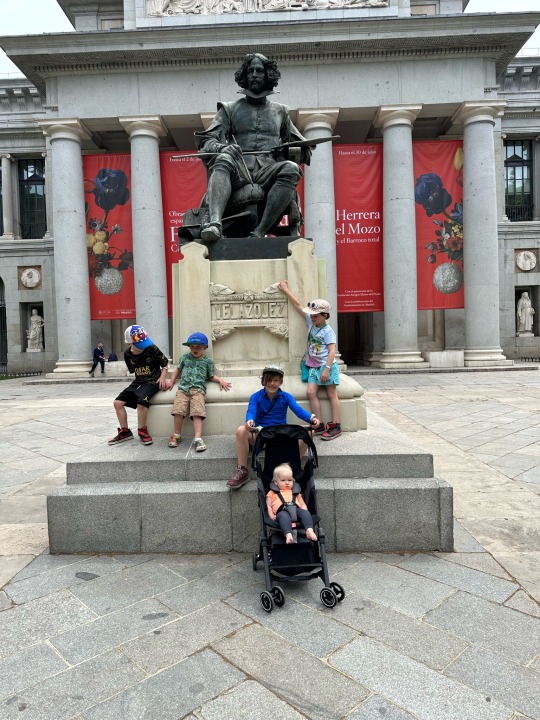




Madrid day 3 - Carlie Sam and Cam had flown into Valencia the night before, and kindly agreed to train over to spend the day in Madrid with us. The kids were all fired up to see her cousin and made sure to treat het like a queen the whole day. We stopped briefly at the Estadio Santiago Bernabeu (home stadium of Real Madrid), where both Sam and Matt avoided peer pressuring each other into buying things for children. We then headed to the Prado to get the kids some cultures. Matt again got in trouble for taking a photo inside (but promises he did not see any signs saying not to), so there are not many pics to share, but trust we saw fancy paintings and sculptures.
Highlights included:
many paintings by Goya, including the pinturas negras. matt recalls being disturbed by the "Saturn devouring his son" painting when he saw a picture of it in high school Spanish and found the real deal also disturbing
Paintings by velazquez (and his statue outside)
El Greco paintings
Bosch paintings, including "the garden of earthly delights"
a few by Rafael (hoping to get the full ninja turtle quartet on this trip)
Henry starting to have some bleeding around his super loose bottom tooth and working it out right about the time we left the museum.
Heading to the Parque Retiro after for some frisbee tossing and Cam pampering
2 notes
·
View notes